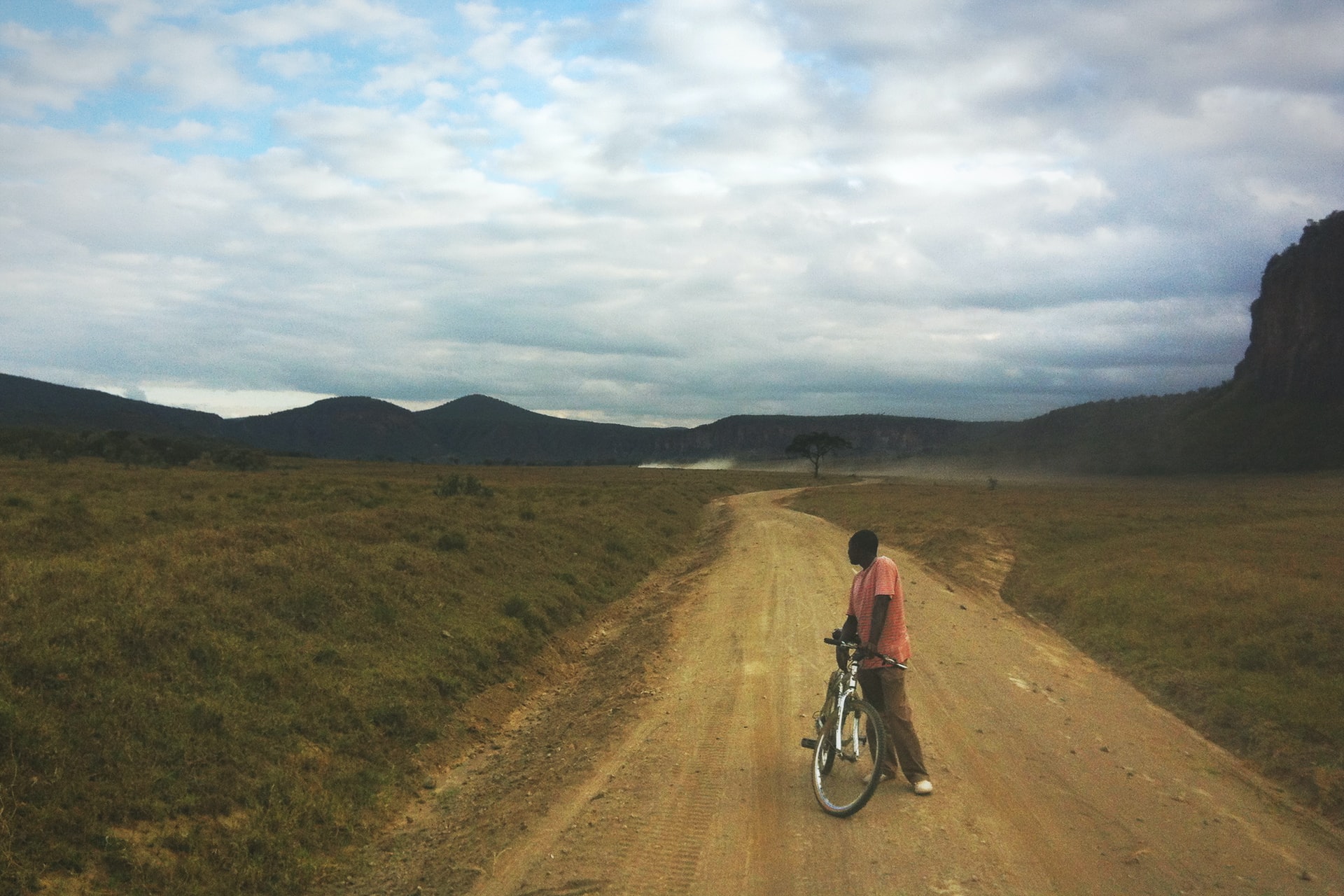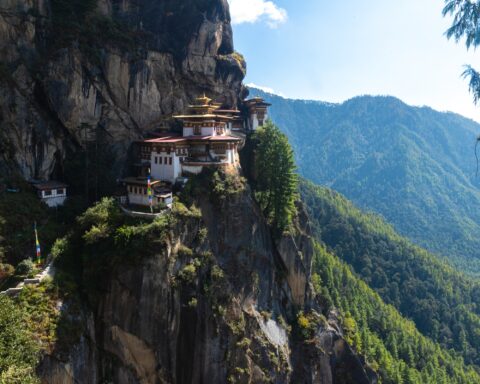The 28th of July marked this year’s Earth Overshoot Day. This means that humans have used all biological resources that Earth can naturally regenerate by next year, and we are critically reminded again that we are living on loaned energy.
In 1971, regenerable resources lasted almost the entire year. The steady increase of natural resources used leaves us in need of 1.75 planets to cover our excessive use and exploitation of natural resources in the name of growth.
“Impacts of ecological overspending are apparent already in soil erosion, desertification, reduced cropland productivity, overgrazing, deforestation, rapid species extinction, fisheries collapse and increased carbon dioxide concentration in the atmosphere.” (overshootday.org)
The harmful consequences of ecological overshoot are felt everywhere in the world, although some places are more affected than others. One continent that is considered especially vulnerable to climate change is Africa. Climate change affects the landscape, economy and societal structures in Africa in a myriad of ways, such as temperatures rising faster than in most other places, more severe weather phenomena, and increased desertification. However, Africa is also taking action and exemplifies its commitment to stop climate change.
Taking Back Our Impact
Climate change demands our full attention and has elicited a number of possible solutions suggested to reversing our impact and its consequences. Innovation is key to develop methods that can achieve this reversal long-term.
The main sources of CO2 emissions in energy production are found in techniques such as burning lignite, peat, or wood in an unsustainable manner. Wood is an extremely unsustainable fuel and the highest emitter of CO2 into the atmosphere, especially if landscapes are not reforested. Despite the considerably high emissions, deforestation also destroys a resource that is necessary to remove carbon dioxide from our atmosphere. The mass destruction of trees has a severe impact on the future of our planet.
The Sahel, a region in Northern Africa bordering the southern Sahara, is highly affected by deforestation and the increased number of droughts and floods that are the consequence of the changing climate. Similar to many societies on the African continent, the people of the region are largely dependent on agriculture, which relies on rainfalls. Desertification and the more severe weather phenomena has a negative impact on harvest success and, in turn, will increase poverty and displacement of populations.
One project that tries to counteract this impact is called the Great Green Wall Initiative. The goal of this initiative is to create a strip of native vegetation that stretches the entire width of the African continent. This not only creates a large capacity for increased carbon removal through trees and plants as a natural source, but also builds a landscape fit to resist further desertification, reviving the natural capacities of the landscape.
According to National Geographic, the Great Green Wall initiative “uses an ‘integrated landscape approach that allows each country to address land degradation, climate change adaptation and mitigation, biodiversity, and forestry within its local context.”
This project, which has been going on for a long time with little attention paid to it until 2010, has the potential to remove millions of tons of carbon dioxide from the atmosphere working against deforestation just as much as the desertification of the landscape. In general, landscape restoration might be considered one of the most straight-forward methods of carbon removal there is.
However, the downside of these processes, despite their great importance, is that they require a large amount of other natural resources, which might not be available everywhere. Additionally, the consequences of climate change that we feel already today, may negatively impact the success of the restoration of landscapes, for example through an increased amount of wildfires.
Other than these natural methods of carbon removal, there are also different human-made approaches that work to remove carbon dioxide from the air. A popular example is the world’s largest DAC (Direct Air Capture) plant in Iceland called ‘Orca’ that pumps carbon dioxide out of the air and under the ground.
While incredibly innovative and useful, these carbon plants require a large amount of energy to work, which should ideally be sourced sustainably in order to reach its full potential of carbon dioxide reduction. Additionally, the scale of these facilities required to capture our current emissions is so excessive, that plants are a much more effective option for now. However, localized carbon capture at heavy industry sites could be a more sensible approach to account for this output directly.
Replacing Energy
Carbon removal is a crucial component of reducing the impact of climate change, which arguably might be the factor that can catapult our emissions from the aspired net-zero toward a net-negative. However, James Irungu Mwangi, a Kenyan strategist and social entrepreneur who is dedicated to aid Africa in taking sustainable climate action, argues that despite the imperative removal of CO2 from our atmosphere, cutting down on our current output of CO2 is non-negotiably the most efficient way of moving towards the necessary climate goals at all.
Again, it is Africa which has the potential to become a crucial trailblazer regarding climate action. No less than 92% of the electricity on the grids in Kenya is renewable and around 73% of the power generated there is coming from clean sources, with the Olkaria Geothermal Energy Plant providing around a quarter of it.
The Olkaria Plant is located seamlessly into the environment of Hell’s Gate National Park, where animals co-exist peacefully with the energy plants. Geothermal energy is created naturally through the volcanic activity and tectonic movement below the earth’s surface. The steam that is created by the high temperatures is retained, separated from the water, and turns a turbine which produces electricity.
Geothermal energy has many advantages which make it fit to replace those non-sustainable energy sources that we are using today. “This energy is coming from the Earth – and it’s essentially limitless”, it requires less space than wind or solar power, and it is much more cost-efficient in the long run.
Of course, geothermal energy cannot be considered a cure-all. Despite its availability and comparatively low impact on the environment, the method still has its downsides. While it is argued that geothermal energy can be sourced anywhere depending on how deep one is willing to drill, areas exhibiting tectonic movement, such as Hell’s Gate National Park, are initially necessary to generate large amounts of energy. Though it requires a smaller amount of land, the installation of the Olkaria Plant in the National Park required 1,181 Maasai people to be displaced in order to make way for the geothermal plant.
Now, many Maasai are not only largely excluded from access to this sustainable energy, but also remain uninvolved in the project’s employment opportunities. Additionally, energy poverty remains consistent throughout Africa due to high prices and roughly one in three Africans living below the global poverty line.
It remains crucial that indigenous communities are included in decisions and realization of these efforts to use the environment’s potential in a just manner, so that colonial narratives are not continued. If these factors are considered, Africa can further expand its role as a leading figure in the action against climate change. After an early Earth Overshoot Day, we should remember to use the potential of the sustainable resources available so that we don’t take from the world we have beyond its capacity.
To learn more about the potential of sustainable energy sources and the vicious cycle of energy poverty despite the abundant resources, watch Mwangi’s enlightening TED talk from 2021:
Reviewed by Juxhina Malaj. Proofread by Ashley McCarthy.
Header image by Francesca Noemi Marconi on Unsplash.





